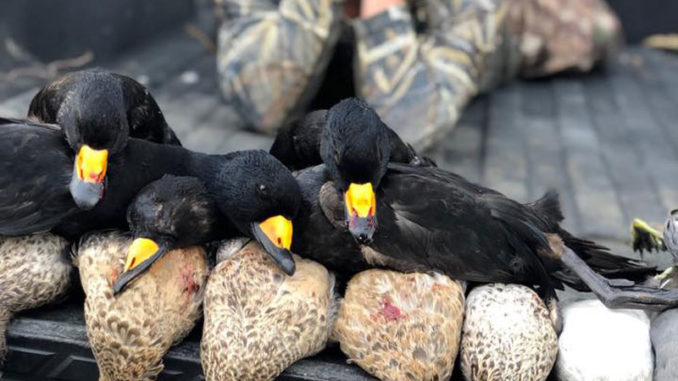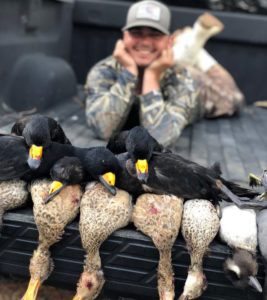
Relatively uncommon now, black scoters are typically seen much later in the season
A sea duck more commonly found on the East and West Coasts has been turning up on Louisiana duck hunters’ straps already this season — likely because of the strong, fast-moving cold front that barreled into the state just before the Coastal Zone kicked off on Nov. 10.
Larry Reynolds, waterfowl study leader for the Louisiana Department of Wildlife and Fisheries, said he’s gotten reports and pictures of several black scoters taken from spots including Caddo Lake, Johnson’s Bayou, Des Allemands, the Biloxi Wildlife Management Area and even Henderson Swamp.
“Typically these are coastal birds, common on the East Coast or the West Coast or the Great Lakes,” Reynolds said. “Every year I get a few reports, but usually it’s late in the season and usually it’s on one of the big reservoirs, like Caddo Lake or Bistineau or a place like that.
“I see a handful of them on the January (aerial) survey on Breton Sound, and Paul Link sees a few of them every year on Lake Pontchartrain. So there are a few of them that winter here, but they’re not common at all; certainly nowhere near the numbers that have already been killed in November suggest.”
Reynolds didn’t have a definitive answer on why so many of the sea ducks were being seen here — especially this early in the season — but ventured a guess that the strong cold front that blew into the state right before opening weekend likely played a part in the birds’ appearance this month.
“That really big, fast cold snap right before the Coastal Zone season opened was a fast-moving really cold, cold front, and I guess it blew some this way,” he said. “That’s really the only thing I can think of — some of those birds just picked up and moved here.”

It didn’t end well Sunday morning for four black scoter drakes when they headed for James Wheat’s blind in Caernarvon around 8:30. He and Jake Bernard needed four more ducks to finish up their two-man limit, and they wound up knocking down all four.
“When they came in, I thought they were redheads because of how dark they were and they were low-flying,” Wheat said. “But when they got close, I could see that orange spot on their nose.
“We got down, and the first shot he shot he dropped two. He got so excited, he didn’t pull the trigger again. I knocked down one and the other one looped around and tried landing back in the decoys, and I shot that one. It was crazy.”
Wheat, who owns Wheat’s Custom Calls in St. Bernard, said he’s mounting the two birds he shot, and Bernard is mounting the two he knocked down to commemorate a morning they won’t soon forget.
“That’s a rare occasion,” he said. “It was definitely the hunt of a lifetime, that’s for sure.”
